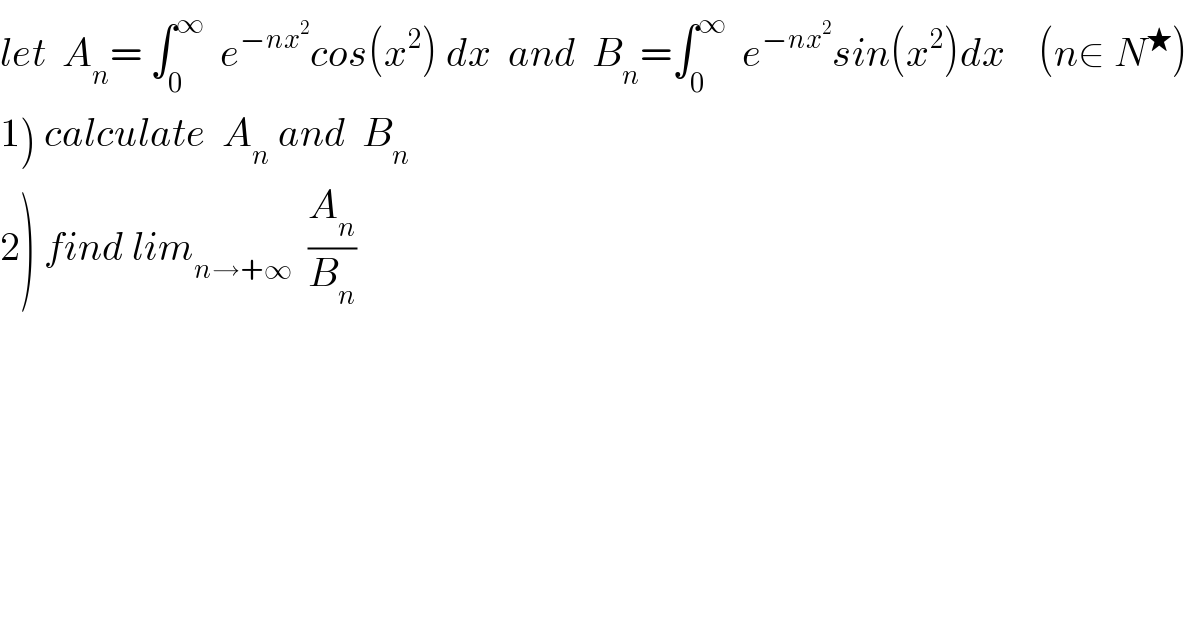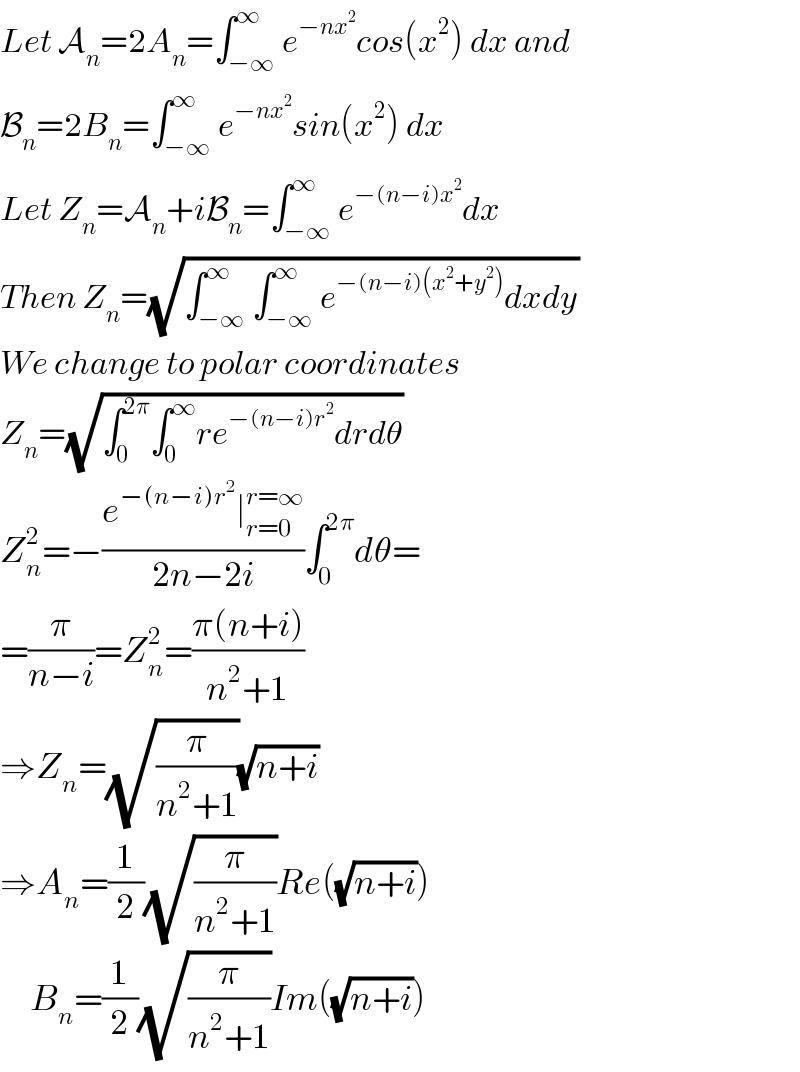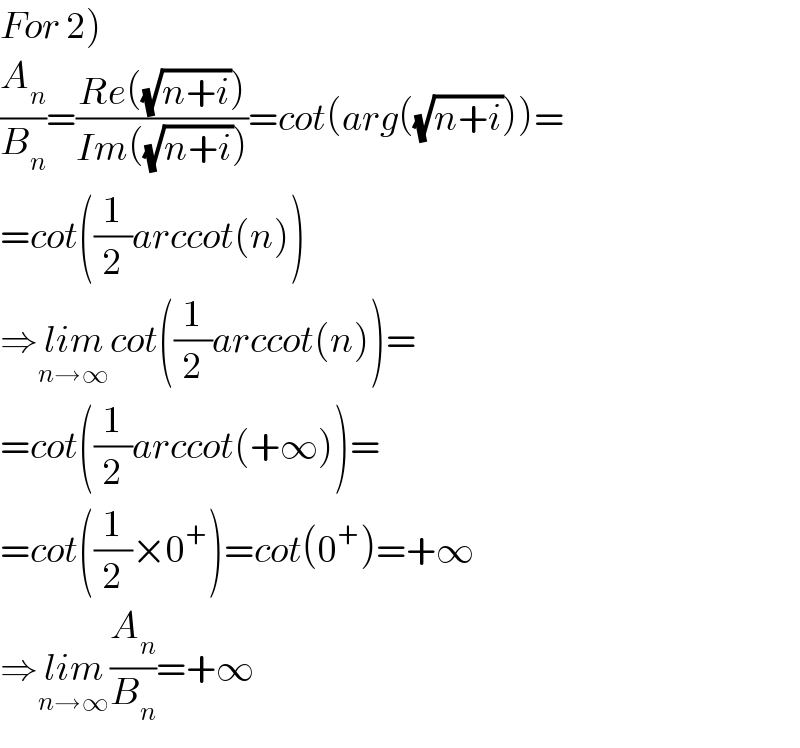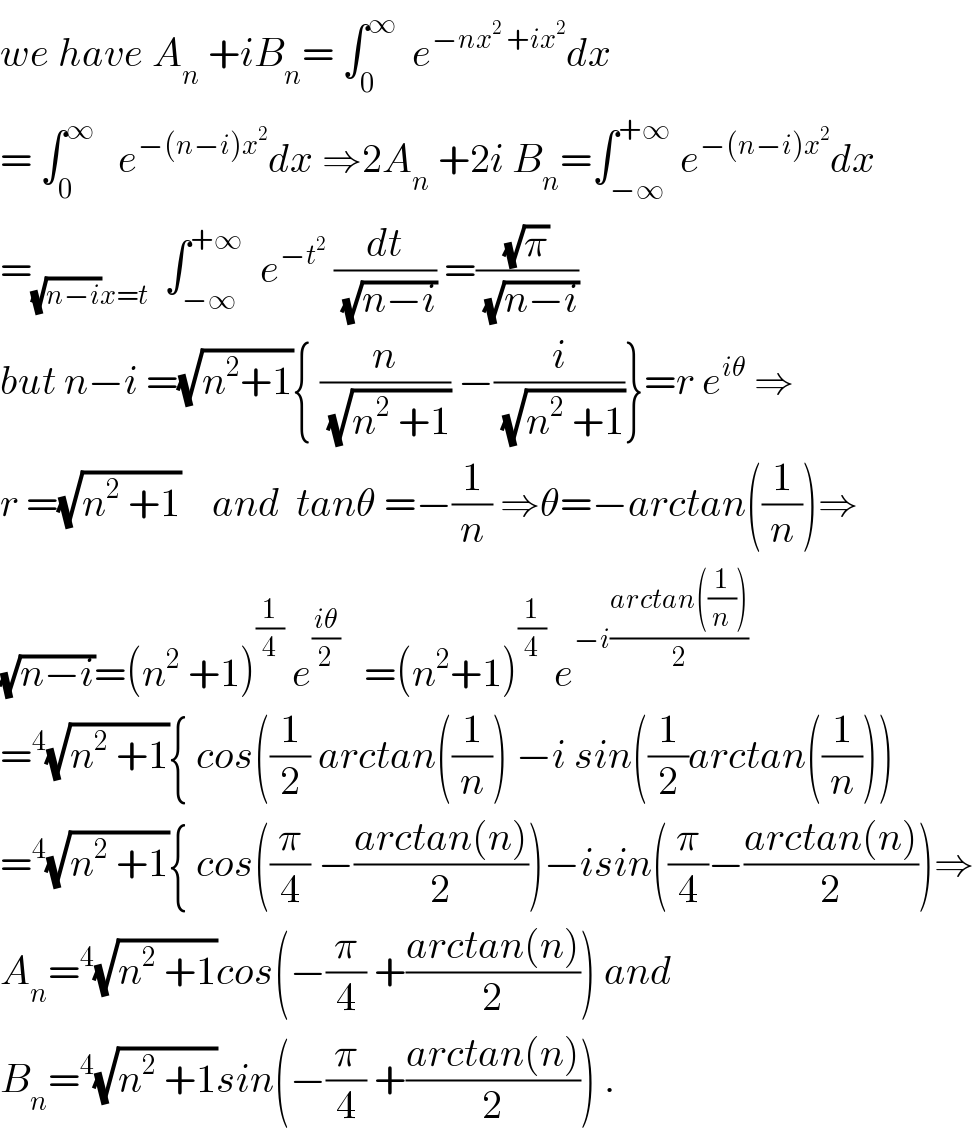
Question and Answers Forum
Previous in Relation and Functions Next in Relation and Functions
Question Number 41513 by maxmathsup by imad last updated on 08/Aug/18

Answered by alex041103 last updated on 09/Aug/18

Commented by alex041103 last updated on 09/Aug/18

Answered by math khazana by abdo last updated on 09/Aug/18

Commented by math khazana by abdo last updated on 10/Aug/18

